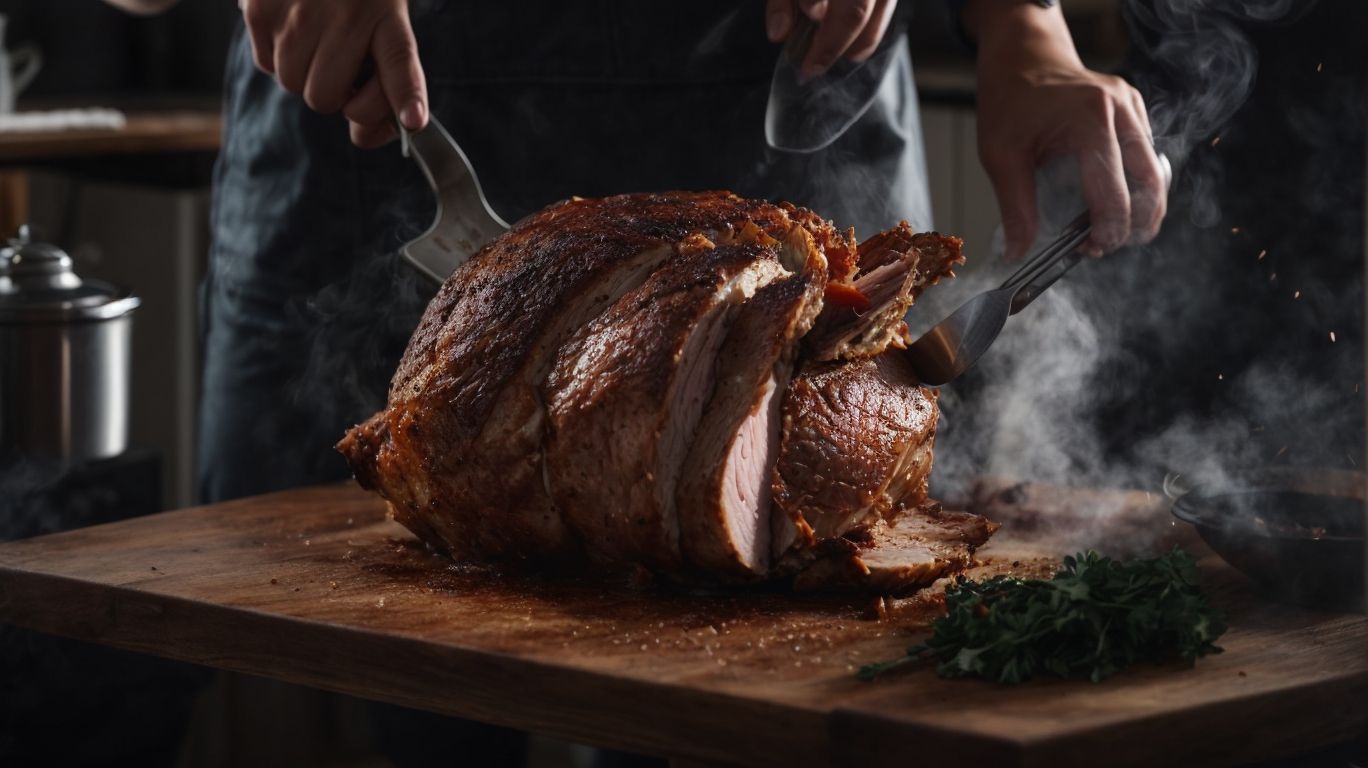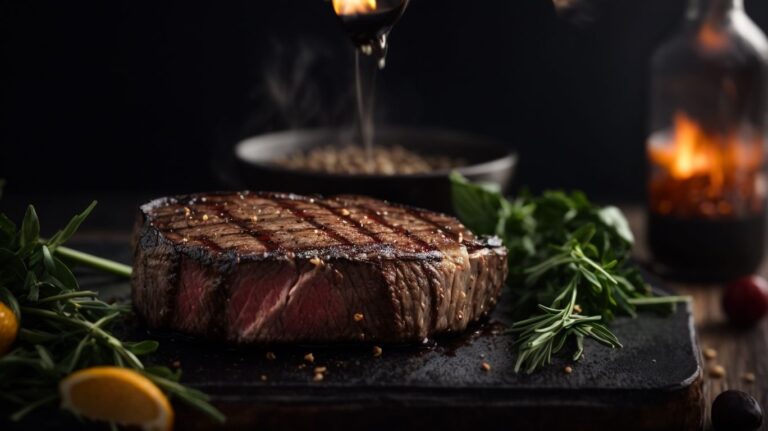How to Cook Pork for Pulled Pork?
Are you a fan of juicy, flavorful pulled pork but not sure how to make it at home? Look no further!
We cover everything you need to know about preparing, cooking, shredding, and serving the perfect pulled pork. From choosing the best cut of pork to selecting the right seasonings and cooking methods, we will guide you through the process step by step.
Stay tuned for tips and tricks from an award-winning culinary blogger to achieve mouth-watering pulled pork every time.
Key Takeaways:
What Is Pulled Pork?
Pulled pork is a savory dish made from slow-cooked pork shoulder, typically prepared with a flavorful BBQ sauce.
This cooking method allows the meat to become incredibly tender, resulting in pulled strands that can easily be pulled apart with a fork. The pork shoulder, also known as pork butt, is a popular cut for this dish due to its marbled fat, which adds richness and flavor during the slow cooking process.
Pulled pork has become a staple in American cuisine, often served on sandwiches, tacos, or as a standalone main course. Its versatility extends to a wide range of dishes, from traditional southern BBQ to more modern fusion recipes.
What Cut of Pork is Best for Pulled Pork?
To achieve the perfect pulled pork, the best cut of pork to use is the pork shoulder, also known as pork butt.
One of the main reasons why pork shoulder is ideal for pulled pork is its perfect fat content. The marbling of fat within the meat ensures that it remains juicy and tender after hours of slow cooking or smoking, unlike leaner cuts that might dry out. The fat also imparts flavor and helps keep the meat succulent throughout the cooking process.
The pork shoulder has connective tissues that break down during the cooking process, resulting in incredibly tender and moist meat that easily shreds for that classic pulled pork texture. This cut is like a blank canvas for flavor, as it readily absorbs any seasonings, rubs, or marinades you choose to use.
What Are the Different Methods for Cooking Pulled Pork?
There are various methods for cooking pulled pork, including using a slow cooker, oven, or smoker to achieve tender and flavorful results.
Regarding using a slow cooker for pulled pork, the advantage lies in its convenience and set-it-and-forget-it nature. Simply season the pork, add your favorite BBQ sauce or rub, set the timer, and let the slow cooker work its magic over several hours. The low and slow cooking process ensures that the meat becomes incredibly tender and absorbs all the flavors.
On the other hand, cooking pulled pork in the oven allows for a caramelized exterior while maintaining a juicy interior. The indirect heat helps to break down the collagen in the meat, resulting in that sought-after melt-in-your-mouth texture.
Using a smoker adds a distinct smoky flavor to the pork, enhancing its overall taste profile. Each method offers a unique way to prepare pulled pork, catering to different preferences and culinary experiences.
Preparing the Pork
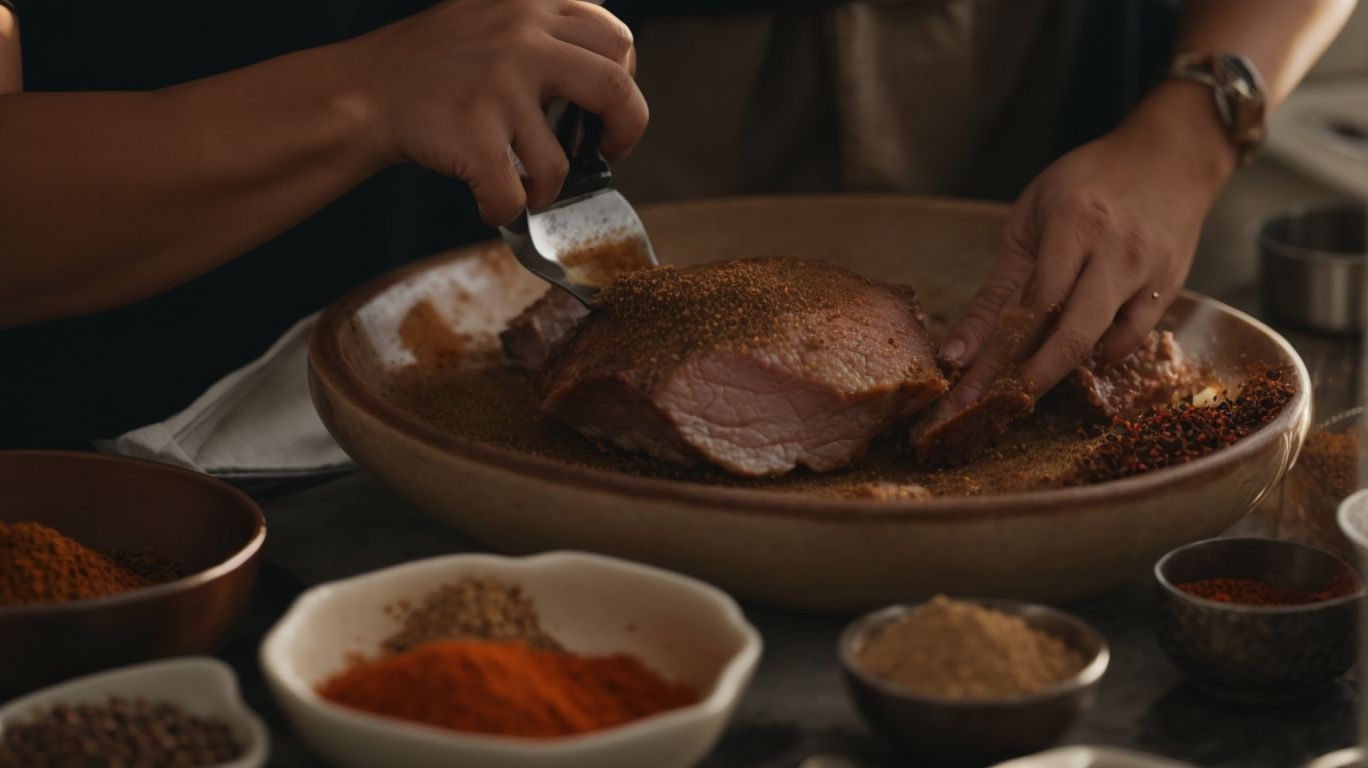
Credits: Poormet.Com – Billy Davis
Before cooking pulled pork, it’s essential to properly trim the pork shoulder, season it with aromatic spices, and sear it for enhanced flavor.
Start by rinsing the pork shoulder under cold water and pat it dry with paper towels. This helps to remove any excess moisture that could prevent proper searing.
Next, grab a sharp knife and carefully trim off any excess fat from the surface of the pork. Removing excess fat not only improves the overall texture of the pulled pork but also allows the spices to penetrate the meat more effectively.
Once the trimming is done, create a spice rub using a combination of your favorite spices such as paprika, garlic powder, cumin, and brown sugar. Rub this mixture generously all over the pork shoulder, ensuring that every inch is coated for maximum flavor.
How to Trim the Pork?
Trimming the pork shoulder involves removing excess fat and silver skin to ensure a leaner and more tender result in the pulled pork.
Begin by placing the pork shoulder on a clean cutting board, ensuring a stable surface for the trimming process. Use a sharp knife to carefully slice away any thick layers of fat across the surface of the meat. Trimming the fat not only enhances the flavor but also prevents the meat from becoming greasy during the cooking process.
Next, focus on removing the silver skin, a tough membrane that covers a portion of the meat. This step is crucial as silver skin does not break down easily during cooking and can result in chewy, unappealing bites in the pulled pork.
What Are the Best Seasonings for Pulled Pork?
The best seasonings for pulled pork include a blend of spices such as paprika, garlic powder, onion powder, and cumin for a balanced and flavorful profile.
Each of these spices plays a crucial role in enhancing the overall taste and aroma of the dish. Paprika adds a hint of smokiness and depth, while garlic powder brings a savory undertone. Onion powder contributes a subtle sweetness, balancing out the other flavors. Cumin, with its earthy and warm notes, ties everything together beautifully.
When these spices harmonize, they create a mouthwatering blend that permeates the tender pulled pork, infusing it with layers of complex flavors. The smoky, spicy, and slightly sweet profile appeals to a wide range of palates, making it a popular choice for gatherings and cookouts.
Cooking the Pork
Cooking pulled pork involves utilizing different methods such as the oven, slow cooker, or smoker to achieve succulent and tender meat infused with smoky flavors.
When using a slow cooker for preparing pulled pork, start by generously seasoning your pork shoulder with a flavorful rub, ensuring that the spices penetrate the meat for maximum taste. Add some liquid, like apple cider or broth, to the slow cooker to keep the meat moist throughout the cooking process. Set the slow cooker to low heat and let the pork cook slowly for several hours until it reaches the perfect level of tenderness.
What Are the Different Cooking Methods for Pulled Pork?
There are multiple cooking methods for preparing pulled pork, including the oven, slow cooker, and smoker, each offering unique flavors and textures to the dish.
When using a slow cooker to make pulled pork, the low and slow cooking process allows the meat to become incredibly tender, while also infusing it with the flavors of the seasonings and sauces used. This method is perfect for those who enjoy a hands-off approach to cooking, as you can simply set it and forget it until the meat is ready to be shredded.
On the other hand, a smoker brings a rich, smoky flavor to the pork, creating a distinct barbecue taste that many enthusiasts love. The slow smoking process results in succulent and flavorful meat that is ideal for those who enjoy authentic BBQ.
Using the oven for pulled pork provides a convenient and efficient way to achieve similar results as the slow cooker, with the added bonus of crispy edges from roasting. This method is great for those who want the flavors of slow-cooked pork but may not have a slow cooker or smoker on hand.
How to Cook Pulled Pork in the Oven?
To cook pulled pork in the oven, preheat the oven, place the seasoned pork in a roasting pan, cover it with foil, and slow roast until tender and easy to shred.
Next, when your delicious pork is tender, carefully remove it from the oven. Be cautious as the roasting pan will be hot! Let the meat rest for a few minutes under the foil to lock in the juices and flavors. This resting period is essential in achieving succulent pulled pork.
Shredding the pork is the final step. Using two forks, gently pull the meat apart into shreds. The slow roasting process should have made this step effortless. Feel free to mix in any remaining pan juices for added flavor and moisture.
How to Cook Pulled Pork in a Slow Cooker?
Cooking pulled pork in a slow cooker involves placing the seasoned pork in the slow cooker, adding liquid, and cooking on low heat for several hours until the meat is tender and easily shredded.
One of the key benefits of using a slow cooker for preparing pulled pork is the convenience it offers. By setting up the ingredients in the morning, you can let it cook slowly throughout the day, allowing the flavors to develop and the meat to become incredibly tender.
The low and slow cooking method in a slow cooker helps to retain the natural juices of the pork, resulting in a succulent and flavorful dish that melts in your mouth with every bite.
As the pork cooks slowly, the connective tissues break down, resulting in a more tender and moist end product compared to other cooking methods.
How to Cook Pulled Pork in a Smoker?
Smoking pulled pork involves preparing the smoker, maintaining a consistent temperature, adding wood chips for smoke flavor, and slow-cooking the pork until it reaches a tender and smoky perfection.
To begin the process, ensure your smoker is clean and ready for use. Start by loading the charcoal and lighting it to get the heat going. Once the smoker is at the desired temperature, carefully place the pork shoulder on the grate. For that authentic smoky taste, add soaked wood chips into the smoker and close the lid to let the magic happen. The slow-cooking technique allows the pork to absorb the flavors while becoming incredibly tender. Patience is key as you let the smoker work its magic, resulting in a mouthwatering dish that is worth the wait.
Shredding and Serving the Pork
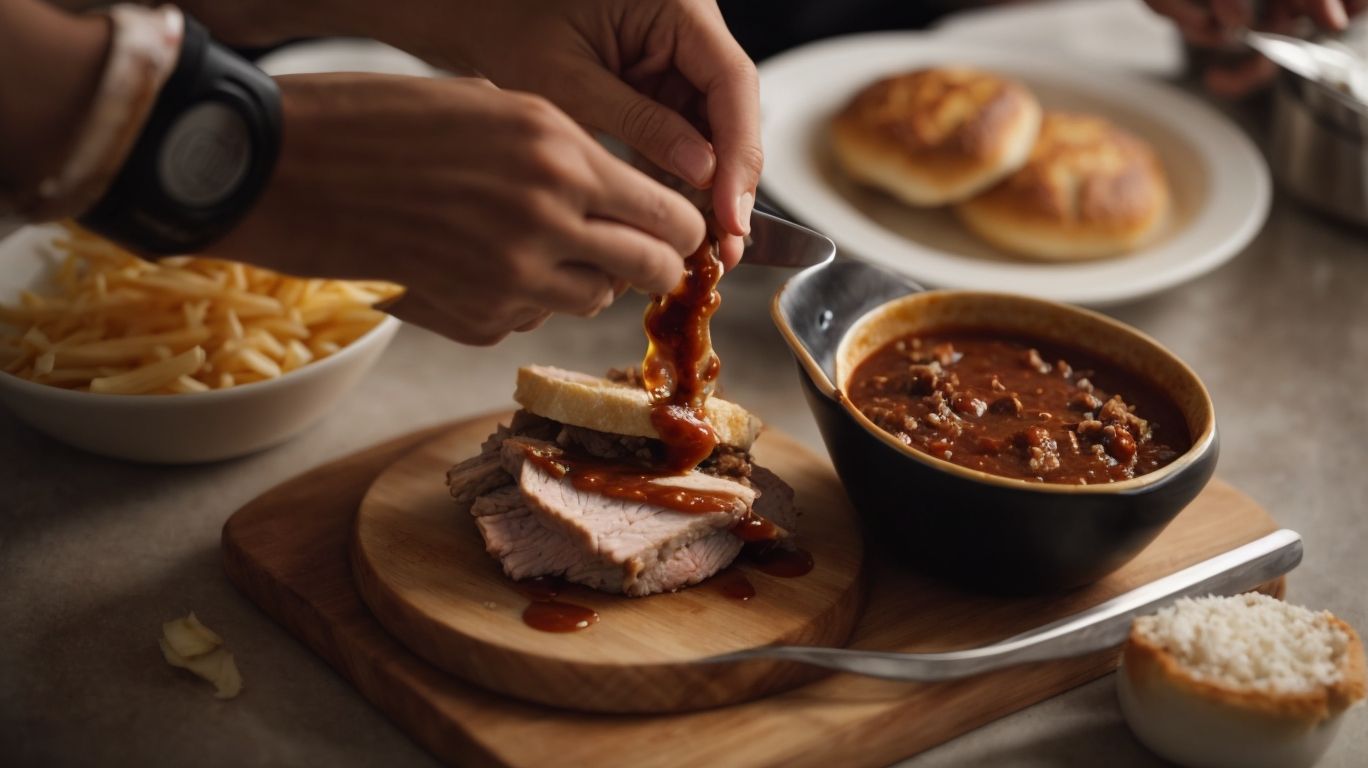
Credits: Poormet.Com – Scott Jackson
Shredding pulled pork into tender strands and serving it in sandwiches, tacos, burritos, or as a topping for nachos creates a mouthwatering meal for any occasion.
Regarding portioning, a good rule of thumb is to allocate about 1/2 to 3/4 cup of pulled pork per serving for sandwiches or tacos. For heartier meals like burrito bowls, you may want to dish out closer to 1 to 1.5 cups.
Reheating pulled pork can be easily done by placing it in a saucepan on low heat with a splash of broth or barbecue sauce to keep it moist. Alternatively, you can reheat it in the microwave, covering it with a damp paper towel to prevent drying out.
For storing leftovers, transfer the pulled pork to an airtight container and refrigerate it for up to 3-4 days. To extend its shelf life, consider freezing it in portions for up to 3 months.
The beauty of pulled pork lies in its versatility; not only is it fantastic in sandwiches and tacos, but it can also be incorporated into salads, quesadillas, or even omelets for a delicious twist on classic dishes.
How to Shred the Pork?
Shredding pulled pork can be done using two forks to pull the meat apart into tender strands, suitable for serving in sandwiches, tacos, or other dishes.
One key tip for shredding pulled pork effectively is to let it rest for a few minutes after cooking to allow the juices to redistribute and make the meat easier to shred.
Once the meat has rested, hold the fork in each hand and use a ‘pull and lift’ motion to shred the pork, ensuring you go against the grain to achieve those perfect, juicy strands.
You can adjust the size of the shreds based on your serving size preference, whether you want larger chunks for hearty sandwiches or smaller pieces for tacos or sliders.
This versatility in shredding technique allows for a customizable experience, making it easy to adapt the texture of the pulled pork to various dish options such as salads, wraps, or even pizza toppings.
What Are the Best Sauces to Serve with Pulled Pork?
Pairing pulled pork with tangy BBQ sauce or a hint of Coca-Cola-based sauce enhances the flavors and adds a delicious twist to this classic dish.
While BBQ sauce offers a perfect balance of smoky sweetness and tangy spices, the addition of a Coca-Cola-based sauce lends a unique depth and caramelized richness to the succulent pork. The rich molasses notes in BBQ sauce complement the slow-cooked pork beautifully, while the effervescence of a Coke-based sauce adds a subtle kick of acidity and sweetness. These sauces not only elevate the taste of the tender pork but also provide a delightful contrast of flavors that will leave your taste buds craving for more.
Tips and Tricks for Perfect Pulled Pork
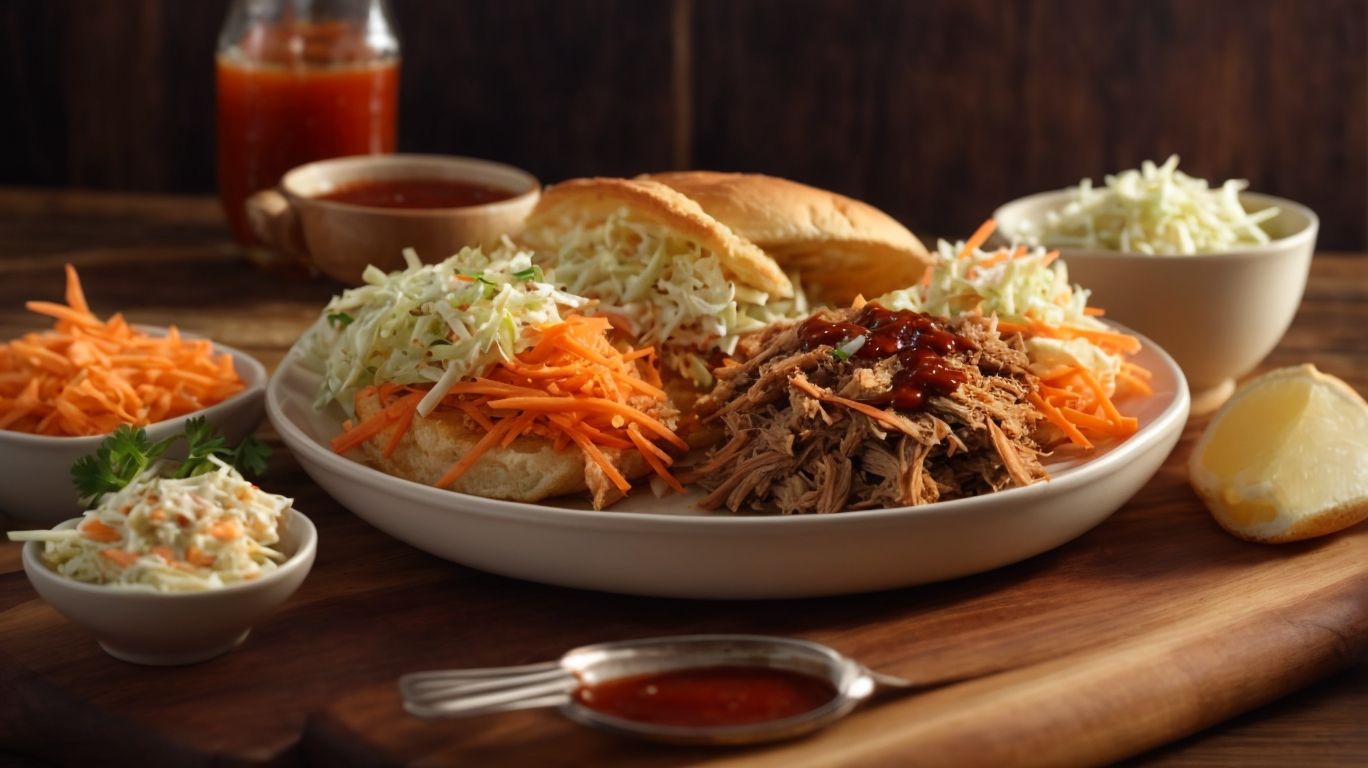
Credits: Poormet.Com – Mark Jones
Achieving perfect pulled pork involves estimating cooking times, calculating seasoning ratios, and repurposing leftovers into creative dishes for a delicious culinary experience.
When estimating cooking times, consider the size and thickness of the pork cut, aiming for tender meat that pulls apart effortlessly. For calculating spice ratios, a good rule of thumb is to use about 1 tablespoon of seasoning per pound of meat.
When repurposing leftovers, think outside the box; shredded pork can be transformed into tacos, sandwiches, or even added to salads for a flavorful twist. By mastering these key elements, you’ll elevate your pulled pork game to new heights.
Frequently Asked Questions
How to Cook Pork for Pulled Pork?
1. What is the best cut of pork to use for pulled pork?
The best cut of pork for pulled pork is a pork shoulder. This cut has enough fat and connective tissue to ensure juicy and tender pulled pork.
2. Should I use a dry rub or a marinade for my pulled pork?
It’s a matter of personal preference, but a dry rub is typically used for pulled pork. Just be sure to let the dry rub sit on the pork for at least an hour before cooking.
3. How long should I cook the pork for pulled pork?
For the best results, cook the pork for at least 8 hours on low heat. This will allow the meat to become tender and easily shredable.
4. Can I use a slow cooker or should I use an oven?
Both methods work well for cooking pulled pork. However, using a slow cooker will allow the pork to cook slowly and absorb more flavor, resulting in a more tender and flavorful meat.
5. Do I need to remove the fat from the pork before cooking?
It is recommended to trim any excess fat from the pork before cooking. This will prevent the meat from becoming too greasy and allow the flavors of the rub or marinade to better penetrate the meat.
6. How do I know when the pork is done cooking?
The pork is ready when it easily shreds apart with a fork. You can also use a meat thermometer to ensure the internal temperature reaches at least 190°F.

